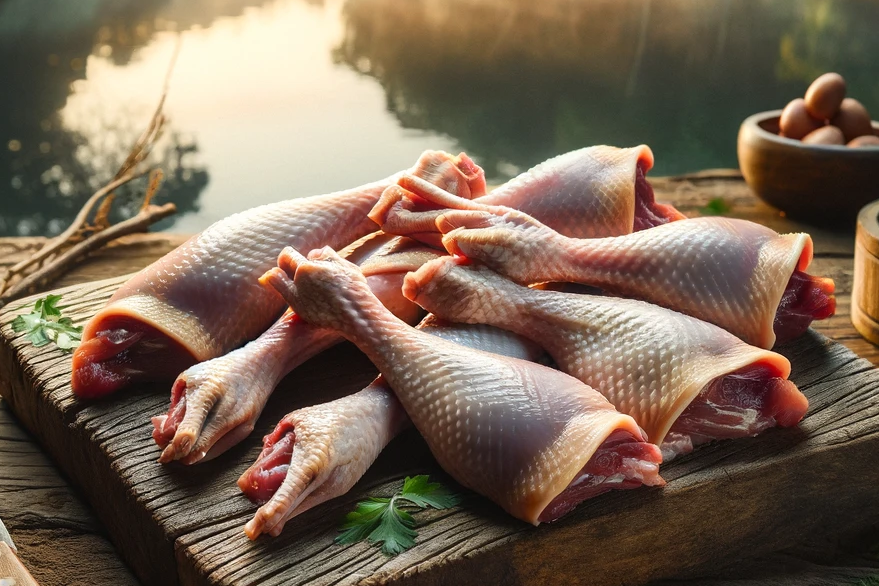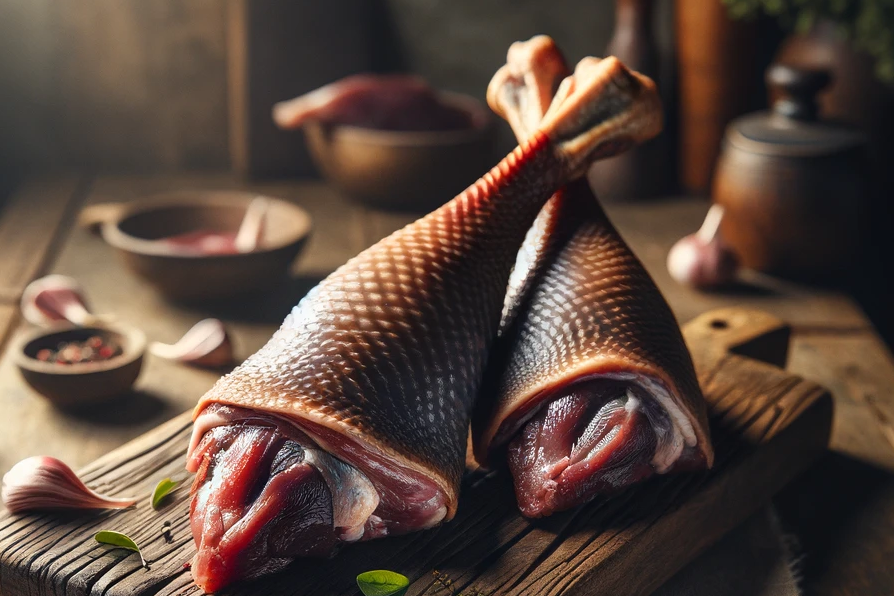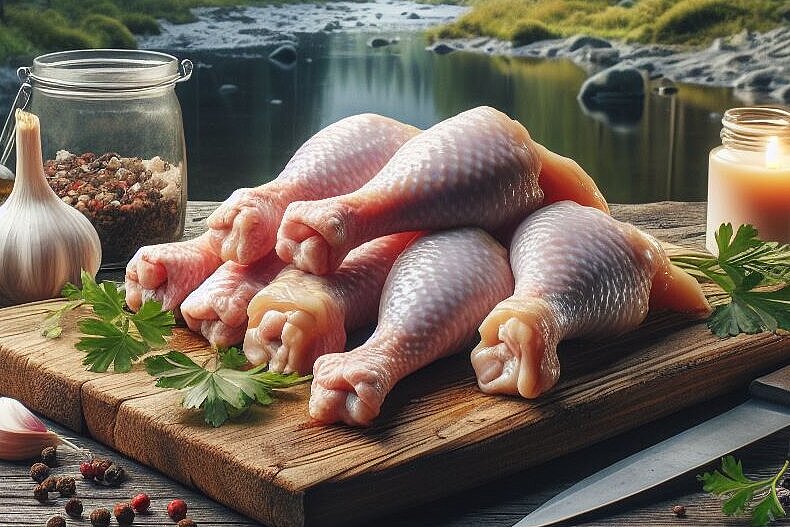Pigeon leg
In the ongoing search for optimal nutrition for our four-legged family members, new and sometimes unconventional food sources are constantly coming into the spotlight. One of these is pigeon thigh - a delicacy that is not only prized in human cuisine, but could potentially also end up in our dogs' bowls. But before you serve your dog this exotic meat variant, it's worth taking a closer look at the benefits and potential risks. What makes pigeon legs so special and how do they compare to more common meats when it comes to our best friend's diet?
What are pigeon legs?
Pigeon legs, as the name suggests, come from the lower limbs of the pigeon. They are characterized by their dark, tender meat, which is a rich source of various nutrients. Unlike white poultry meat such as chicken, pigeon thighs offer a more intense flavor experience and a different nutritional composition that could make them interesting for dogs' diets.
Nutrient profile
Pigeon thighs are rich in proteins, essential fatty acids, vitamins and minerals. In particular, they contain a high concentration of iron, zinc and vitamin B, which are important for maintaining the health and vitality of dogs.
Benefits of pigeon legs for dogs
Incorporating pigeon legs into a dog's diet can have several health benefits:
High quality protein source
Protein is crucial for dogs as it is needed to build and repair tissue, as well as for the production of hormones and enzymes. The protein found in pigeon thighs can help support these vital functions.
Promoting skin and coat health
The essential fatty acids in pigeon legs can contribute to skin and coat health by preventing dryness and dandruff and providing a shiny, healthy coat.
Supporting the immune function
Vitamins and minerals such as zinc and the B vitamins play an important role in supporting the immune system. Pigeon legs can help to strengthen your dog's immune system and improve its ability to defend itself against disease.
Possible disadvantages of pigeon legs for dogs
Despite the many benefits, there are also some potential disadvantages that should be considered:
Risk of disease transmission
As with all raw meats, pigeon legs carry the risk of transmitting pathogens such as salmonella. Proper hygiene and preparation are therefore essential.
Bones as a potential risk
The bones in pigeon legs, especially when cooked, can splinter and pose a risk of injury or intestinal obstruction.
Potential food allergies
Although allergies to pigeon meat are rare in dogs, it's important to look out for signs of an allergic reaction when introducing new foods into your dog's diet.
Pigeon legs can be a nutritious and tasty addition to your dog's diet, as long as they are prepared and fed responsibly. The benefits range from high quality protein to supporting skin, coat and immune function. Ultimately, incorporating pigeon legs into your dog's diet, with the above precautions in mind, can provide enriching variety and contribute to healthy diversity.
If you notice any signs of hypersensitivity or poisoning in your dog, you should see your vet immediately. We are not a substitute for a vet, but we try to be as accurate as possible. Every dog reacts differently and we recommend you get a second opinion or consult your vet if in doubt.
Stay healthy and take good care of your four-legged friend!😊
Similar to Pigeon leg
Duck legs are the legs of the duck, a dark meat known for its rich flavor and juicy texture. Compared to breast meat, it contains more fat and connective tissue, making it an excellent source of...
Goose legs are the lower parts of the legs of a goose, which are rich in meat and are often prepared by roasting, braising or other cooking methods. They are known for their dark, juicy meat and...
Chicken thigh is a part of the chicken leg that consists of the thigh bone and the adjacent meat. Chicken thigh is rich in protein, iron, zinc and vitamin B12. It also contains fat, cholesterol and...
Turkey thighs come from the lower part of the legs of the turkey, a bird known for its tasty meat. These thighs consist of darker meat compared to the breast and contain both muscle and connective...



